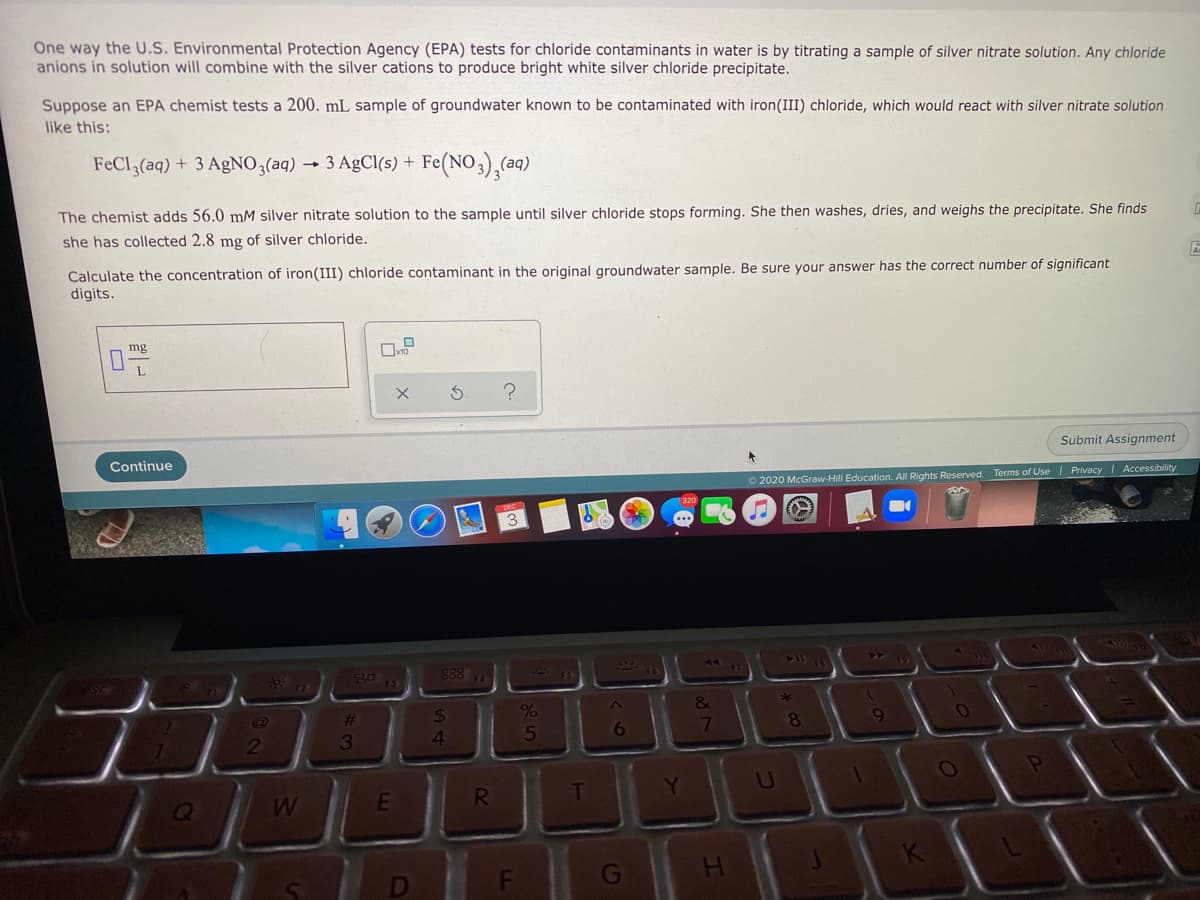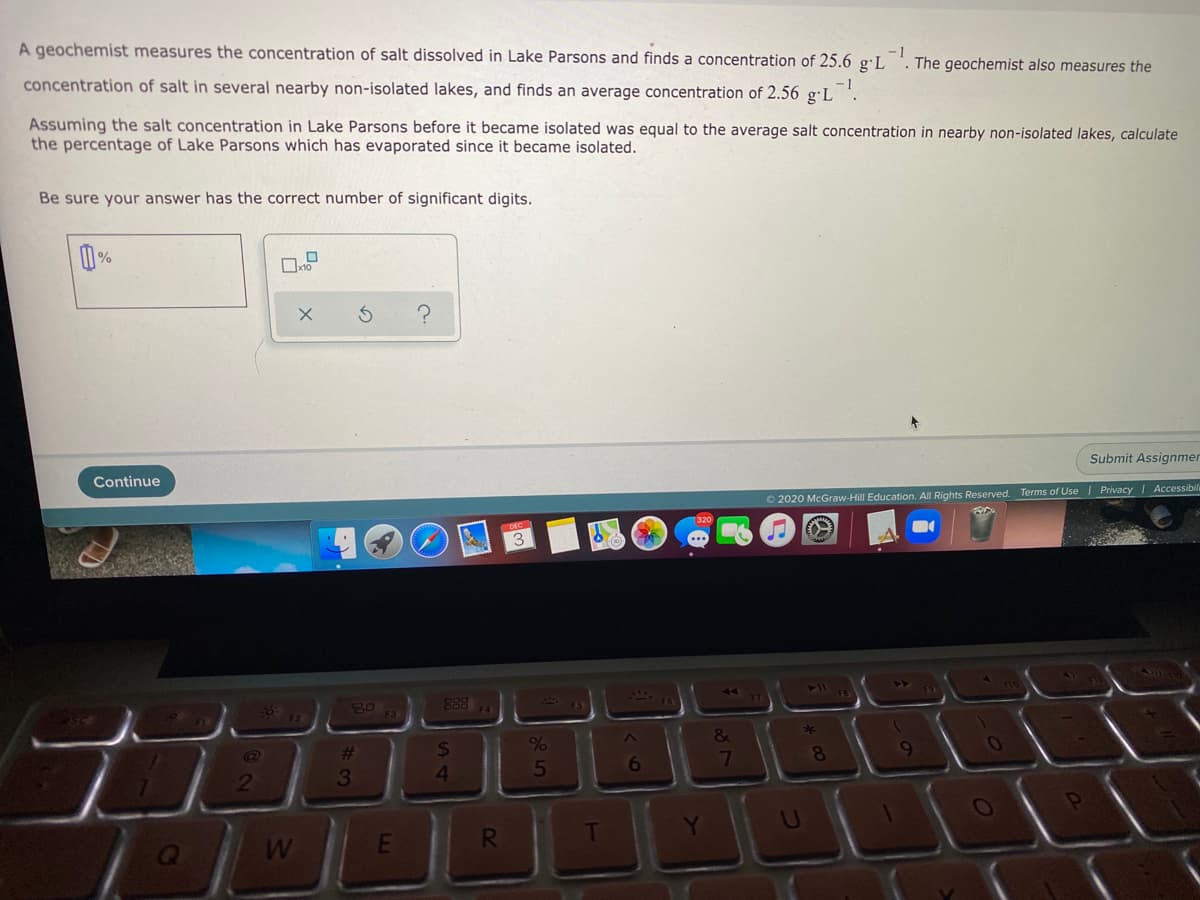One way the U.S. Environmental Protection Agency (EPA) tests for chloride contaminants in water is by titrating a sample of silver nitrate solution. Any chloride anions in solution will combine with the silver cations to produce bright white silver chloride precipitate. Suppose an EPA chemist tests a 200. mL sample of groundwater known to be contaminated with iron(III) chloride, which would react with silver nitrate solution like this: FeCl3(aq) + 3 AgNO3(aq) 3 AgCl(s) + Fe(NO,),(aq) The chemist adds 56.0 mM silver nitrate solution to the sample until silver chloride stops forming. She then washes, dries, and weighs the precipitate. She finds she has collected 2.8 mg of silver chloride. Calculate the concentration of iron(III) chloride contaminant in the original groundwater sample. Be sure your answer has the correct number of significant digits. mg Submit Assignment
States of Matter
The substance that constitutes everything in the universe is known as matter. Matter comprises atoms which in turn are composed of electrons, protons, and neutrons. Different atoms combine together to give rise to molecules that act as a foundation for all kinds of substances. There are five states of matter based on their energies of attraction, namely solid, liquid, gases, plasma, and BEC (Bose-Einstein condensates).
Chemical Reactions and Equations
When a chemical species is transformed into another chemical species it is said to have undergone a chemical reaction. It consists of breaking existing bonds and forming new bonds by changing the position of electrons. These reactions are best explained using a chemical equation.


Trending now
This is a popular solution!
Step by step
Solved in 5 steps









